Data Exchange Update February 2022
The Data Exchange team has committed to run a series of monthly surveys covering different topics regarding the use of the Data Exchange. This month, the survey will cover the usage of validated outcome instruments.
Validated outcome instruments are tools used to assess a client's current status. These instruments are usually psychologically determined through academic peer reviews, however, adapted or developed tools are also used. For more information regarding validated instruments and translating them into SCORE, you can visit the following link:
SCORE Translation Matrix | Data Exchange (dss.gov.au)
We invite you to participate in this short survey. The survey will take approximately 5 minutes to complete and will help us to better understand how organisations measure client outcomes.
Follow this link to complete the survey. Start Survey
Compare Domains Using the Data Exchange Reports
This month, as part of our deep dive series on the Data Exchange Reports, we will focus on the Client Outcomes report.
Client Outcomes Report
Partnership Approach Report
This report allows organisations to perform analysis on client outcomes by SCORE and outlet. It shows how client outcomes vary across time, activities, and domains. You will only see the information submitted by your organisation or your delivery partner where a Handshake agreement is in place. The examples shown below are not indicative of any specific organisation.
Overview
This sheet allows you to see the number of clients assessed (two SCORE assessments in the same domain) for each of the three outcome types (Circumstances, Goal, and Satisfaction and how this changes over time. This is displayed by reporting period.

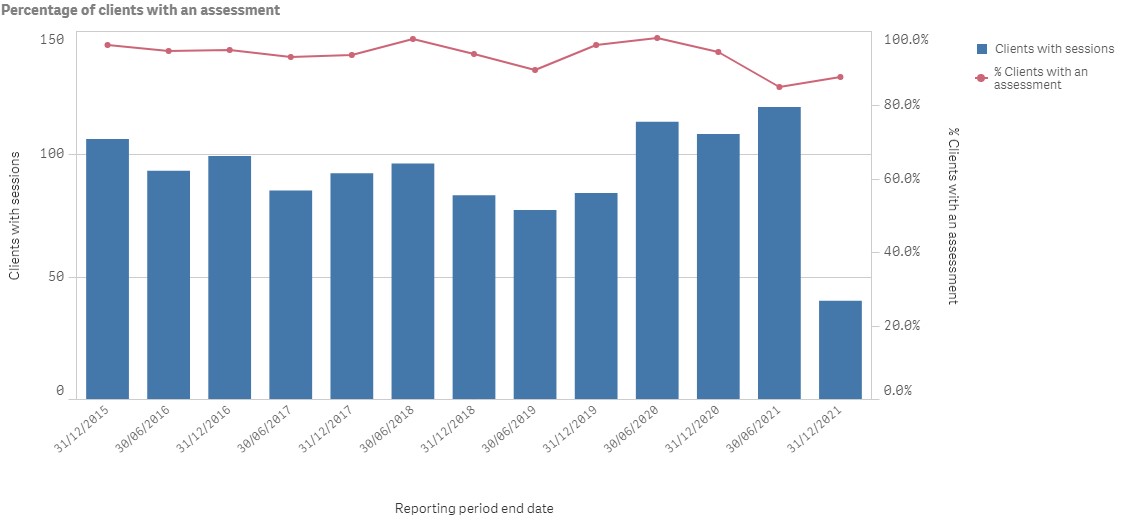
Change in SCORE Over Time
These sheets provide information about client outcomes over time. There are three different sheets, one for each outcome type.
The following example shows outcome change over time for Circumstances. This format is the same for Goals and Satisfaction. The sheet shows:
-
A chart of clients' positive, neutral, and negative outcomes over time.
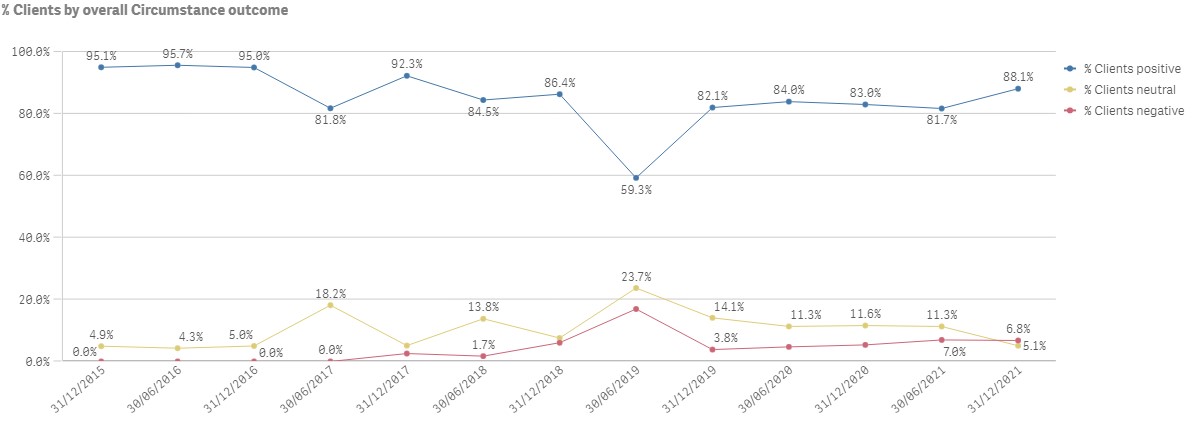
- The number of clients with paired domains over time. Paired domains refers to domains assessed at an initial and subsequent stage. This represents changes in clients' outcomes.
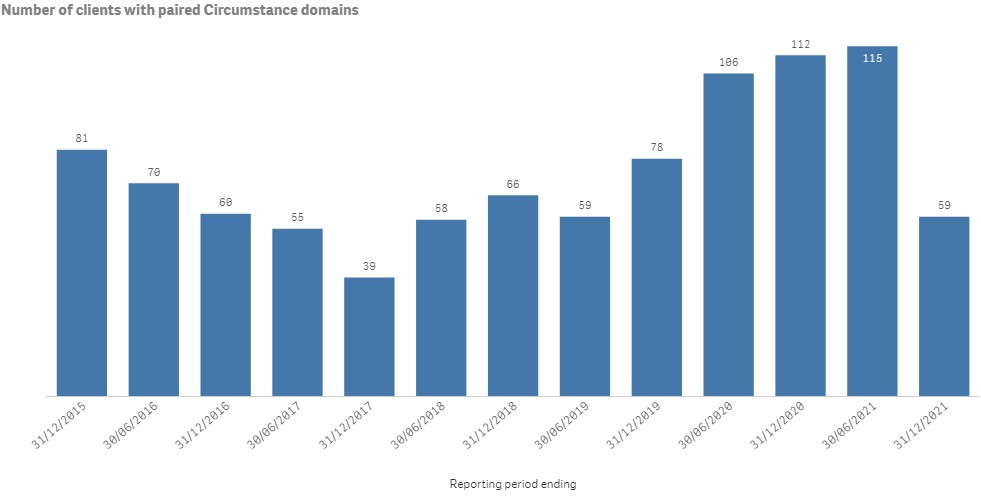
- The average SCORE for clients' earliest and latest assessment, and how this changes over time.

- Information regarding the number of paired domains over time. Ideally we would be looking to see an increase over time as more clients are assessed.
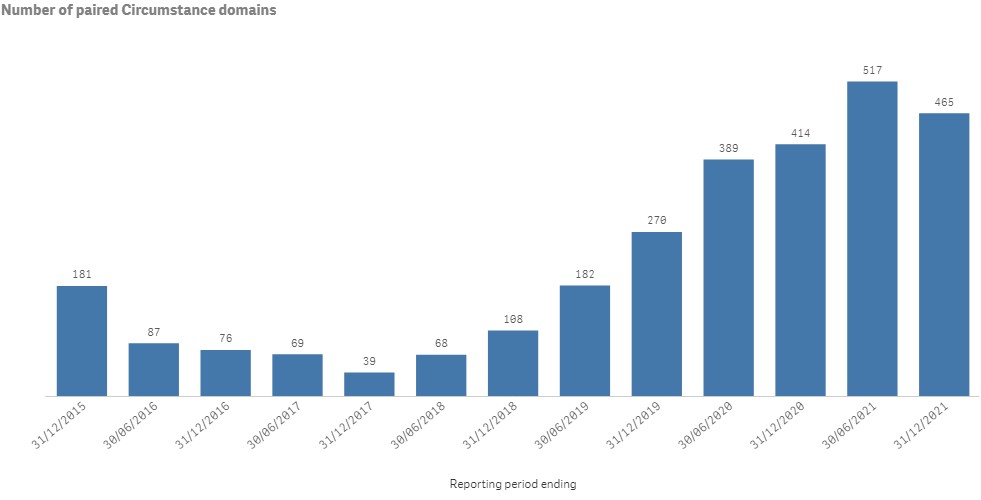
Percentage of Clients with an Overall Positive Outcome Across Outlets
These sheets provide information about clients with an overall positive outcome across different outlets. You can filter by reporting period by using the filter table on the left-hand side. At the centre, you can see the corresponding percentage for client with Positive, Negative and Neutral outcomes. The following example is taken from the Circumstances sheet. This format is the same for Goals and Satisfaction.
- The following graph shows the number of clients with a Circumstances SCORE for each domain. Domains are different for each outcome type. You can refer to the Program Specific Guidance of your program for the domains applying to your program.
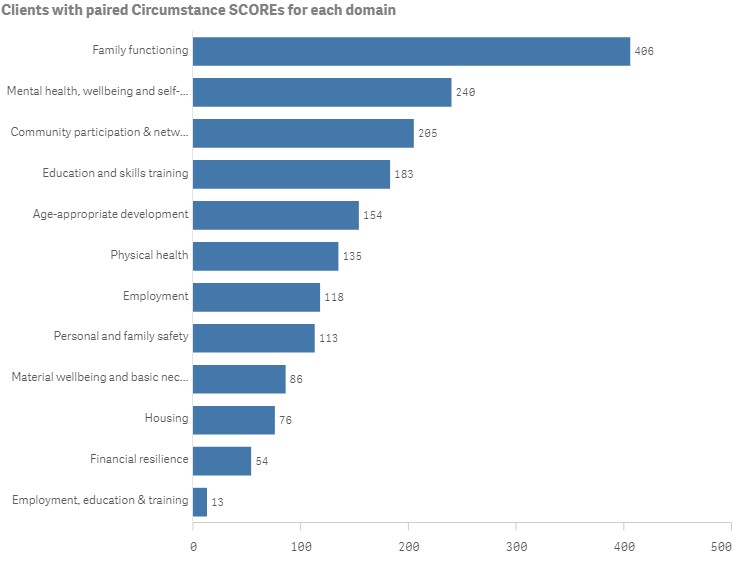
- Each organisation can see the list of activities they are funded to deliver. The table shows the number of clients assessed, number of completed domains and the proportion of clients with an overall outcome type (Positive, Neutral, Negative).

Understanding client outcomes is important. By using the data you can look for areas where service delivery could be improved. We highly encourage organisations to continue to upload data regularly, and review reports frequently to monitor the quality of the data being uploaded.
Useful Tips
Do you expect a change in staffing, or is the person entering data into the Data Exchange about to go on leave? If so, please update your organisation’s Data Exchange access to include other staff members. This helps to ensure your organisation can report regularly and meet the next reporting deadlines.
For more information on how to add a new user, please visit the Data Exchange website.